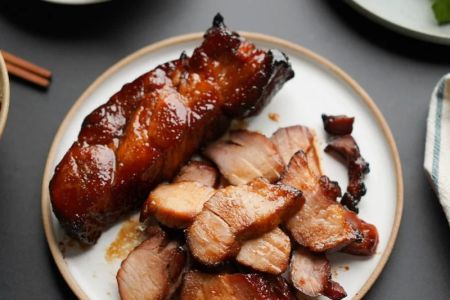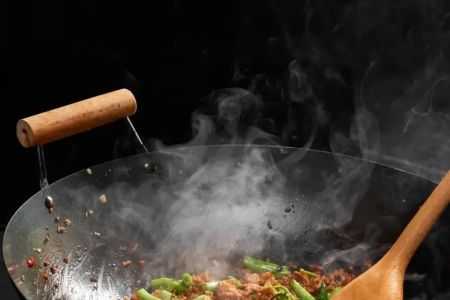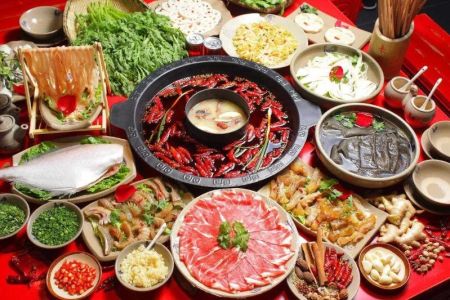Chinese Hot Pot Restaurant: A Flavorful Experience You Can't Miss
- 1. What is Chinese Hot Pot?
- 2. The History and Origin of Chinese Hot Pot
- 3. Choosing the Right Chinese Hot Pot Restaurant
- 4. Must-Try Dishes at Chinese Hot Pot Restaurants
- 5. Real-Life Experience: A Night Out at a Chinese Hot Pot Restaurant
- 6. The Benefits of Eating Hot Pot
What is Chinese Hot Pot?
Chinese hot pot is a traditional and flavorful way of cooking and dining that is enjoyed across China and increasingly popular worldwide. It involves a communal dining experience where diners cook their ingredients in a simmering pot of broth placed at the center of the table. The ingredients can range from thinly sliced meats and vegetables to tofu, seafood, and noodles. As each person adds their preferred ingredients to the pot, they cook it to their liking, making it an interactive and personalized meal.
The joy of Chinese hot pot lies in its versatility—whether you prefer spicy, savory, or mild flavors, there is a broth and set of ingredients to suit everyone’s tastes. It’s a social and fun dining experience that brings people together around the table, making it a perfect choice for family gatherings, celebrations, or casual meals with friends.
The History and Origin of Chinese Hot Pot
Chinese hot pot dates back more than 1,000 years, originating in the northern regions of China. The tradition is believed to have been inspired by the Mongols, who used to cook food in a pot over an open flame during their nomadic lifestyle. Over time, the concept evolved, and various regions in China developed their unique styles of hot pot, with distinct broths, ingredients, and dipping sauces.
In the early 20th century, hot pot restaurants began to emerge, allowing people to enjoy the communal cooking experience in a more convenient setting. Today, Chinese hot pot has become a beloved part of Chinese cuisine and is enjoyed by people of all ages and backgrounds. From street food vendors to high-end restaurants, hot pot is now a popular dining choice globally, with each restaurant adding its own twist to this traditional dish.
Choosing the Right Chinese Hot Pot Restaurant
When looking for the best Chinese hot pot restaurant, it’s important to consider several factors to ensure you have a delightful experience. Here are a few key points to keep in mind:
1. Variety of Broths
The broth is the heart of hot pot, and a good restaurant should offer a variety of broths to choose from. Common options include spicy Sichuan broth, herbal broth, and mild chicken or pork-based broths. Some restaurants also offer a combination pot with two different broths, allowing diners to enjoy the best of both worlds.
2. Fresh and High-Quality Ingredients
Look for a hot pot restaurant that uses fresh, high-quality ingredients. Fresh vegetables, premium meats, and seafood can elevate the entire experience. The quality of the dipping sauces and condiments also plays a role in enhancing the flavors of the meal.
3. Ambiance and Service
The atmosphere of the restaurant should be welcoming and comfortable. A well-lit, clean, and cozy environment makes for a more enjoyable dining experience. Excellent customer service is also crucial, as the staff should be attentive and knowledgeable about the hot pot options on the menu.
Must-Try Dishes at Chinese Hot Pot Restaurants
Chinese hot pot restaurants offer a wide range of ingredients, allowing diners to create their ideal hot pot experience. Here are some must-try dishes you should not miss:
1. Thinly Sliced Meats
Thinly sliced beef, lamb, and pork are popular choices for hot pot. These meats cook quickly in the hot broth, absorbing the flavors and becoming tender. Many restaurants offer premium cuts, such as wagyu beef, which can add a luxurious touch to your meal.
2. Seafood
Fresh seafood, such as shrimp, fish, and scallops, is a delicious addition to any hot pot. The seafood takes on the flavors of the broth and adds a refreshing contrast to the richer meats.
3. Tofu and Vegetables
Tofu is a staple ingredient in hot pot, and it absorbs the flavors of the broth beautifully. Combine tofu with a variety of fresh vegetables like mushrooms, bok choy, and spinach for a balanced and healthy meal.
Real-Life Experience: A Night Out at a Chinese Hot Pot Restaurant
Last weekend, my friends and I visited a Chinese hot pot restaurant to celebrate a special occasion. As soon as we walked in, we were greeted with the warm, spicy aroma of the broth and seated at a large table with a built-in pot in the center. We chose a combination of spicy and mild broths, which allowed us to enjoy both rich flavors and a refreshing contrast.
Our table was filled with a variety of meats, seafood, tofu, and vegetables, and we spent the evening cooking and sharing the dishes. The experience was not only delicious but also fun, as everyone could cook their ingredients to their preferred level of doneness. The highlight was the dipping sauce—rich and savory, with just the right amount of spice.
Overall, it was an unforgettable night, and we left the restaurant feeling satisfied and connected. Chinese hot pot is truly a dining experience that brings people together over food, conversation, and laughter.
The Benefits of Eating Hot Pot
1. Social and Interactive Dining
Hot pot is an incredibly social dining experience. The communal aspect encourages conversation and interaction, making it a great choice for groups, families, or celebrations. It’s an opportunity to bond over food and enjoy each other's company while cooking and sharing a meal together.
2. Healthier Cooking Method
Hot pot is a relatively healthy way to cook. Since the ingredients are boiled in broth, there’s no need for excessive oils or fats, making it a lower-calorie option compared to other types of cooking. You can also customize the ingredients, focusing on lean meats, vegetables, and tofu for a balanced meal.
3. Customizable to Your Taste
With a wide variety of broths, ingredients, and dipping sauces, hot pot is highly customizable to suit your tastes and dietary preferences. Whether you like your food spicy or mild, hot pot gives you the freedom to choose exactly what you want.






![Top Chinese Restaurants for Authentic Cantonese Cuisine in [Your City]](https://img.gochinarose.com/d33/2507/4157910400_450x300.webp)
